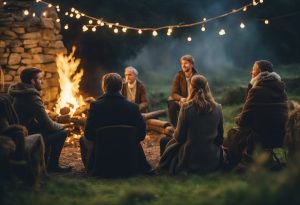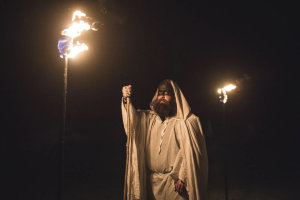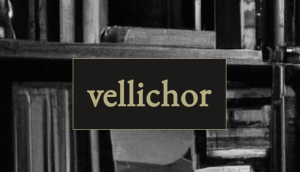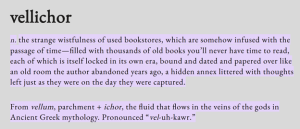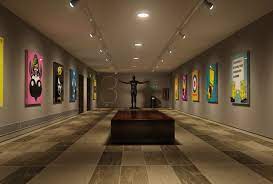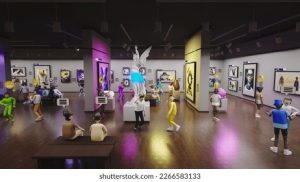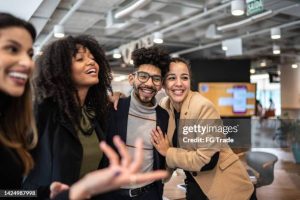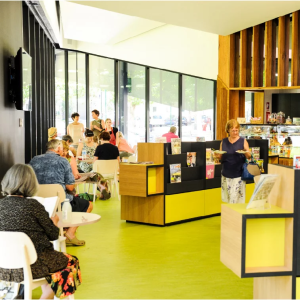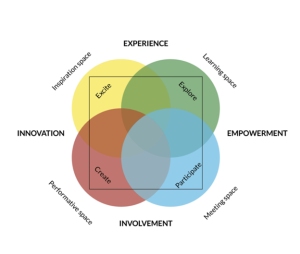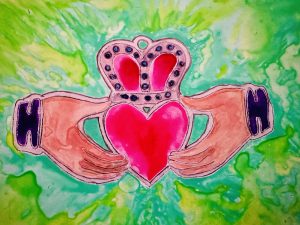
Empathy is a topic explored by the Library and Information Services (LIS) profession often these days. For this blog, let’s understand empathy as defined by the Merriam Webster dictionary, “the action of understanding, being aware of, being sensitive to, and vicariously experiencing the feelings, thoughts, and experience of another” (Merriam-Webster). For this discussion, I will focus on how empathy relates to participatory culture. A library succeeds at participatory culture when it goes above and beyond being a place to consume information and literature by inviting the community to be actively involved in creative processes. The Hyperlinked Library Model describes a participatory institution as one that welcomes user input and creativity and is built on human connections and conversations (Stephens, 2011). In this sense, empathy serves as a powerful tool and support system for a library’s culture of content and idea sharing.

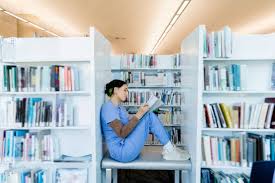
In Michael Casey’s 2011 article, Revisiting Participatory Service in Trying Times – a TTW Guest Post by Michael Casey, Casey emphasizes the importance of engaging library users on social media platforms. The article points out that when libraries use social media solely for announcements and event notifications with no interactions with the users, they miss out on valuable community engagement opportunities. According to Casey, Facebook’s overall user base has increased from 50 million in late 2007 to 800 million by 2011 and the tools for social engagement have also improved. Casey suggests that some library staff should be trained to use available social media tools to engage users. While empathy is not specifically mentioned in this article, the concept of empathy is intertwined with Casey’s suggestions.

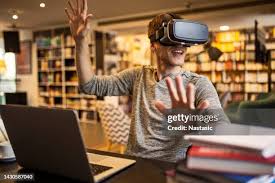
In the 2019 article by Casey O’Brien, How San Francisco’s public libraries are embracing their changing role, it becomes clear the library is changing its approach to participatory library services. Like the prior article, there is emphasis on community, but the focus is on in-person participation in a specific program at the San Francisco Public Library (SFPL) known as “The Mix.” In the prior article by Casey, there was focus on improving engagement with users on social media. In this article written years later by O’Brien, the public library is attempting to strengthen in person engagement while expressing concerns that online services are deterring users from in-person services. By making services free and allowing for direct community input, this program has become successful with bringing people in person at the SFPL. The Mix serves as a safe space and is open to the sharing of ideas, information and content. This program serves an example of empathy being a successful part of in-person community engagement.
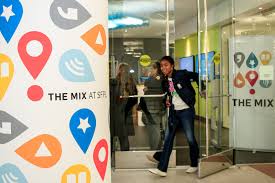
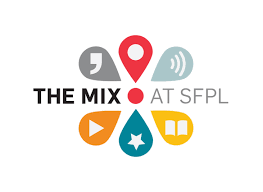
By the 2020s many library programs mention empathy as part of their strategic planning. In the 2023 article, Practicing and Marketing with Empathy in Libraries, by Wren Daniel Ambroise, this trend of empathy is discussed as part of the library’s mission for participatory culture. Wren points out that while practices of empathy have always been intertwined with the development of libraries, it hasn’t been as widely discussed in the past (Ambroise, 2023). Now this topic is being explored in almost all aspects of librarianship and shows great promise in the areas of marketing, engagement and outreach. This article explores studies which have examined the impact of empathy on strategic plans and practices of various marketing campaigns. Long story short, approaching strategic plans and practices with empathy improved results and increased user participation in library services.
As libraries adapt to emerging technology, participatory culture is improving in both physical space and virtual space. In Michael Stephens’s article, The Hyperlinked Library: A TTW White Paper, we learned about participatory practices in the Hyperlinked Library model. The Hyperlinked Library model encourages use of web 2.0 applications and emerging technology in the library, but Stephens points out that, “the model is broader than just online communication and collaboration. It encompasses both physical and virtual space, as well as many types of libraries” (Stephens, 2011). The Hyperlinked Library model isn’t here to replace the physical library, but rather to expand the library’s services and create meaningful connections with users in all types of library spaces. The Hyperlinked Library model approaches library participation with empathy by welcoming user input and creativity.


References:
Stephens, M. (2011, February 21). The Hyperlinked Library: A TTW White Paper. Tame the Web. https://tametheweb.com/2011/02/21/hyperlinkedlibrary2011/
Casey, M. (2011, October 20). Revisiting participatory service in trying times – a TTW guest post by Michael Casey. Tame the Web. https://tametheweb.com/2011/10/20/revisiting-participatory-service-in-trying-times-a-ttw-guest-post-by-michael-casey/
Merriam-Webster. (n.d.). Empathy definition & meaning. Merriam-Webster. https://www.merriam-webster.com/dictionary/empathy
O’Brien, C. (2019, June 24). How San Francisco’s public libraries are embracing their changing role. Shareable. https://www.shareable.net/how-san-francisco-public-libraries-are-embracing-their-changing-role/
Ambroise, W. D. (n.d.). Practicing and marketing with empathy in libraries. Library Philosophy and Practice (e-journal). https://digitalcommons.unl.edu/cgi/viewcontent.cgi?article=15509&context=libphilprac


